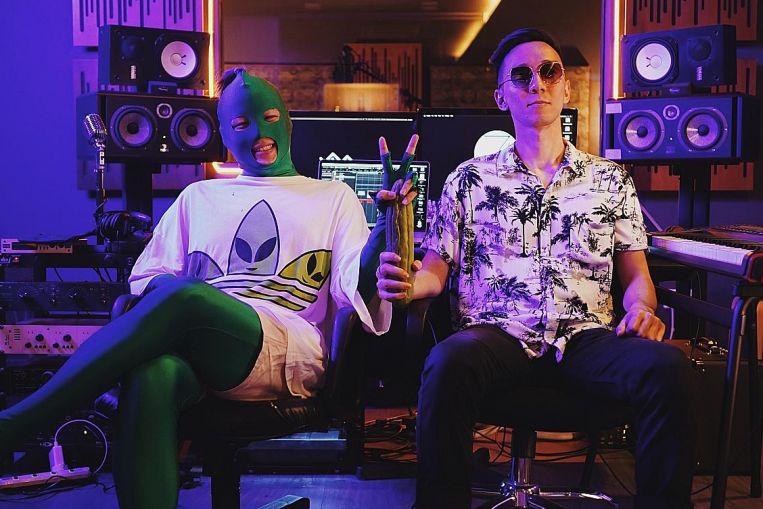For all the hubbub and sometimes lofty predictions surrounding virtual reality's wide consumer launch last year, the immediate sales figures and impact of the technology have been decidedly muted. As hardware prices come down and software offerings begin to catch up, though, the market for high-end VR headsets is slowly creeping out of the doldrums.
Worldwide shipments for high-end, tethered VR headsets (excluding cheaper "phone holsters" like Samsung Gear VR and Google Daydream) exceeded 1 million shipments for the first time in the third quarter of 2017, according to market analysis firm Canalys. Sony's PlayStation VR took a near-majority of the market with an estimated 490,000 shipments, followed by 210,000 for the Oculus Rift and 160,000 for the HTC Vive (140,000 more units went to various other headsets, such as China's DPVR).
The absolute numbers for VR headset sales still aren't all that exciting compared to other successful consumer electronics—both the PS4 and the Xbox One sold a million units in their first day of availability, for instance, and Apple shipped 3.3 million iPhones in its first six months back in 2007.
What's heartening for the VR hopeful is a trendline that looks decidedly positive. Previous Canalys reports for 2017 have estimated 800,000 VR units shipped in the second quarter and about 578,000 in the first quarter. While regular seasonal variation could have something to do with that steady increase, this year's significantpricedrops for all three major VR headsets likely played a larger role.
A full year-on-year trend for the tethered VR market is hard to suss out before the 2017 holiday season is complete (and because all three leading headsets weren't available for at least part of last year). That said, this year's sales seem to be outpacing 2016. Last year, the three major headsets combined to sell just 1.7 million units, according to Canalys. This year, those headsets look like they've already combined to sell more than two million units in just the first nine months based on Canalys reports.
This is hardly explosive growth for a still-young VR market, and the modest sales increase could be seen as disappointing given the price drops. Still, it's better than seeing the nascent VR market faddishly shrinking towards zero sales shortly after the early adopters get their units (see, for example, the Wii U and Ouya).
With an array of Windows Mixed Reality VR headsets joining the fray this holiday season, it will be interesting to see how many people make the jump to virtual reality in the coming year. Canalys, for one, is optimistic, expecting a "sizable boost" to the market from these new offerings. "VR in business can be applied to many industries, such as manufacturing, healthcare and education," Canalys Analyst Jason Low said in a statement. "As top-tier PC vendors, including HP, Lenovo, Acer, Asus, and Dell launch their own VR headsets, using their distribution channel efficiencies, one can expect a strong VR uptake in business."
For all the hubbub and sometimes lofty predictions surrounding virtual reality's wide consumer launch last year, the immediate sales figures and impact of the technology have been decidedly muted. As hardware prices come down and software offerings begin to catch up, though, the market for high-end VR headsets is slowly creeping out of the doldrums.
Worldwide shipments for high-end, tethered VR headsets (excluding cheaper "phone holsters" like Samsung Gear VR and Google Daydream) exceeded 1 million shipments for the first time in the third quarter of 2017, according to market analysis firm Canalys. Sony's PlayStation VR took a near-majority of the market with an estimated 490,000 shipments, followed by 210,000 for the Oculus Rift and 160,000 for the HTC Vive (140,000 more units went to various other headsets, such as China's DPVR).
The absolute numbers for VR headset sales still aren't all that exciting compared to other successful consumer electronics—both the PS4 and the Xbox One sold a million units in their first day of availability, for instance, and Apple shipped 3.3 million iPhones in its first six months back in 2007.
What's heartening for the VR hopeful is a trendline that looks decidedly positive. Previous Canalys reports for 2017 have estimated 800,000 VR units shipped in the second quarter and about 578,000 in the first quarter. While regular seasonal variation could have something to do with that steady increase, this year's significantpricedrops for all three major VR headsets likely played a larger role.
A full year-on-year trend for the tethered VR market is hard to suss out before the 2017 holiday season is complete (and because all three leading headsets weren't available for at least part of last year). That said, this year's sales seem to be outpacing 2016. Last year, the three major headsets combined to sell just 1.7 million units, according to Canalys. This year, those headsets look like they've already combined to sell more than two million units in just the first nine months based on Canalys reports.
This is hardly explosive growth for a still-young VR market, and the modest sales increase could be seen as disappointing given the price drops. Still, it's better than seeing the nascent VR market faddishly shrinking towards zero sales shortly after the early adopters get their units (see, for example, the Wii U and Ouya).
With an array of Windows Mixed Reality VR headsets joining the fray this holiday season, it will be interesting to see how many people make the jump to virtual reality in the coming year. Canalys, for one, is optimistic, expecting a "sizable boost" to the market from these new offerings. "VR in business can be applied to many industries, such as manufacturing, healthcare and education," Canalys Analyst Jason Low said in a statement. "As top-tier PC vendors, including HP, Lenovo, Acer, Asus, and Dell launch their own VR headsets, using their distribution channel efficiencies, one can expect a strong VR uptake in business."












